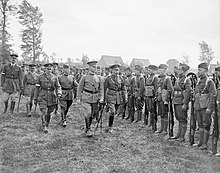
John Leonard Hines was an American general who served as Chief of Staff of the United States Army from 1924 to 1926.
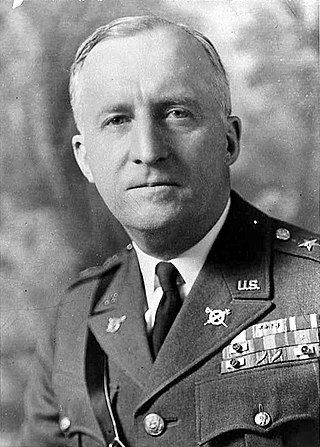
Hugh Aloysius Drum was a career United States Army officer who served in World War I and World War II and attained the rank of lieutenant general. He was notable for his service as chief of staff of the First United States Army during World War I, and commander of First Army during the initial days of World War II.

The 27th Infantry Division was a unit of the Army National Guard in World War I and World War II. The division traces its history from the New York Division, formed originally in 1908. The 6th Division designation was changed to the 27th Division in July 1917.
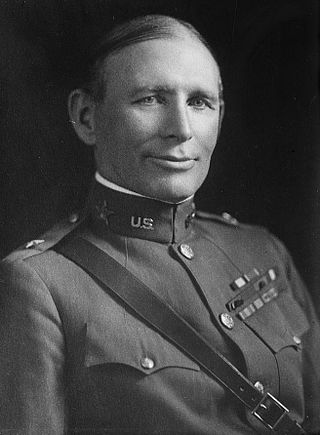
Dennis Edward Nolan was a career officer with the United States Army. He distinguished himself by heading the first modern American military combat intelligence function during World War I. Nolan served as the head football coach at the United States Military Academy in 1902, compiling a record of 6–1–1.
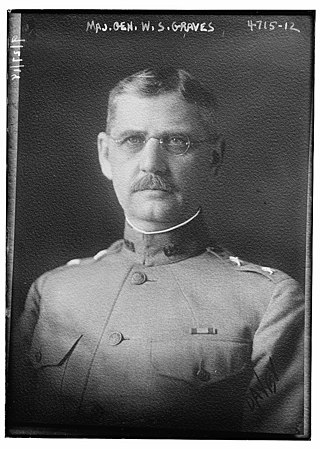
Major General William Sidney Graves was a United States Army officer who commanded American forces in Siberia during the Siberian Expedition, part of the Allied Intervention in Russia, towards the end of World War I.
Camp O'Ryan is a 375-acre (1.52 km2) former New York National Guard training area, also known as the North Java Rifle Range and the Wethersfield Rifle Range, located 3 miles (4.8 km) east of North Java, in the Town of Wethersfield, in the County of Wyoming in New York State.

Bernard William "Pat" Kearney was a Republican member of the United States House of Representatives from New York. Kearney served on the U.S. House of Representatives' Un-American Activities Committee (HUAC) during the Cold War.

Albert Hazen Blanding was a United States Army officer. Among the most distinguished military figures in Florida's history, he was a recipient of the Distinguished Service Medal.

Major General William George Haan was a senior United States Army officer. He commanded the 32nd Division during the final year of World War I, and served in numerous other conflicts during his career.

Cornelius Wendell Wickersham was a decorated United States Army officer with the rank of Lieutenant general; a lawyer and an award-winning author of philatelic literature. He studied at the Harvard University and practiced law for several years, before embarked for France during World War I. Wickersham served as Assistant Chief of Staff for Operations of IV Corps during Battle of Saint-Mihiel and received Army Distinguished Service Medal.

Lieutenant General Stanley Hamer Ford was a senior officer of the United States Army. After serving in numerous conflicts and wars, including World War I, He was commander of the Philippine Department, 1st Infantry Division, Seventh Corps Area, Sixth Corps Area, and the Second Army

Major General Frank Parker was a United States Army officer who had a distinguished military career spanning over forty years, which included service in the Spanish–American War and World War I. He served with distinction during the latter conflict, commanding a regiment, a brigade, and a division, and earning numerous decorations for gallantry in the process. His awards include the Army Distinguished Service Medal, two Silver Star Citations, and numerous foreign decorations and civilian accolades.
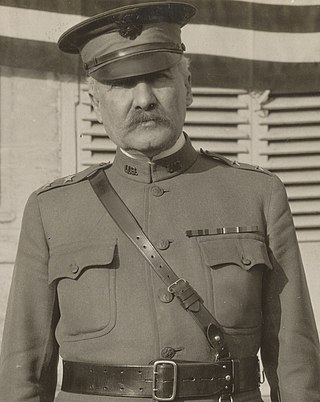
Major General George Windle Read was a senior United States Army officer who was prominent as a corps and division commander in World War I. Read also oversaw the departure of US forces from Europe at the end of the war as commander of the American Embarkation Center at Le Havre, France.

Charles Henry Muir was a United States Army officer. He served from 1885 to 1920, and attained the rank of major general.

The 108th Infantry Regiment is a regiment of the New York Army National Guard. It was first formed in 1898 and has been in continuous existence since 1907. As National Guardsmen, Soldiers of the 108th Infantry can be called upon to serve the state and federal governments. The 108th has served in the Spanish–American War, the Mexican Border War, World War I, World War II, Iraq, and Afghanistan.

George Bell Jr. was a United States Army Major General who commanded the 33rd Infantry Division, an Army National Guard formation, during the final year of World War I.

Camp Wadsworth was a World War I-era training facility for the United States Army. Located near Spartanburg, South Carolina, the post was in operation from its opening in July 1917 until it was inactivated in March 1919, following the Armistice that ended the war.
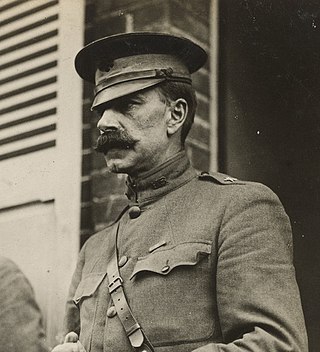
Charles I. DeBevoise was a United States Army officer in the early 20th century, who was awarded the Distinguished Service Medal.

James Leslie Kincaid was an American lawyer, politician, businessman, and military officer from New York.


